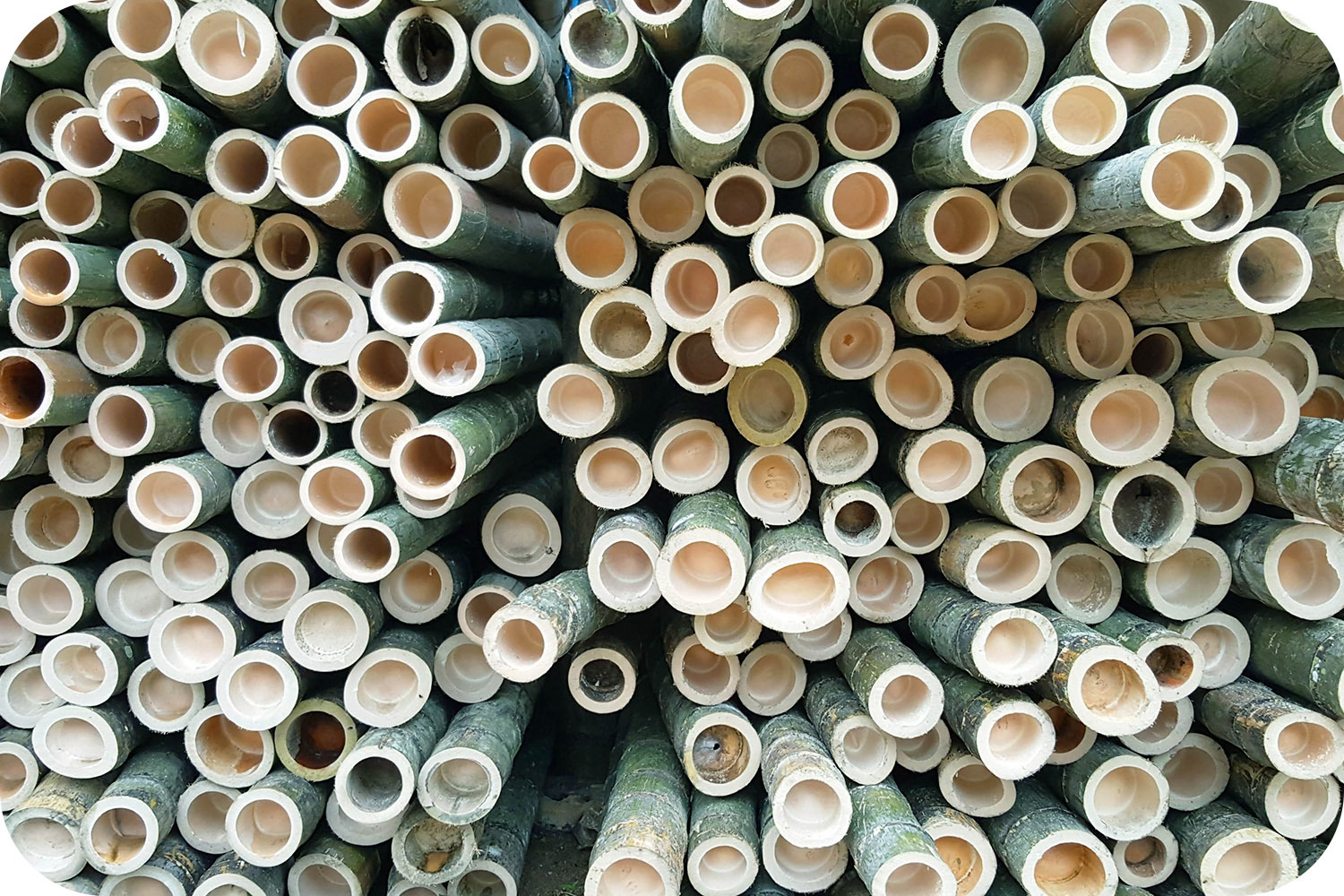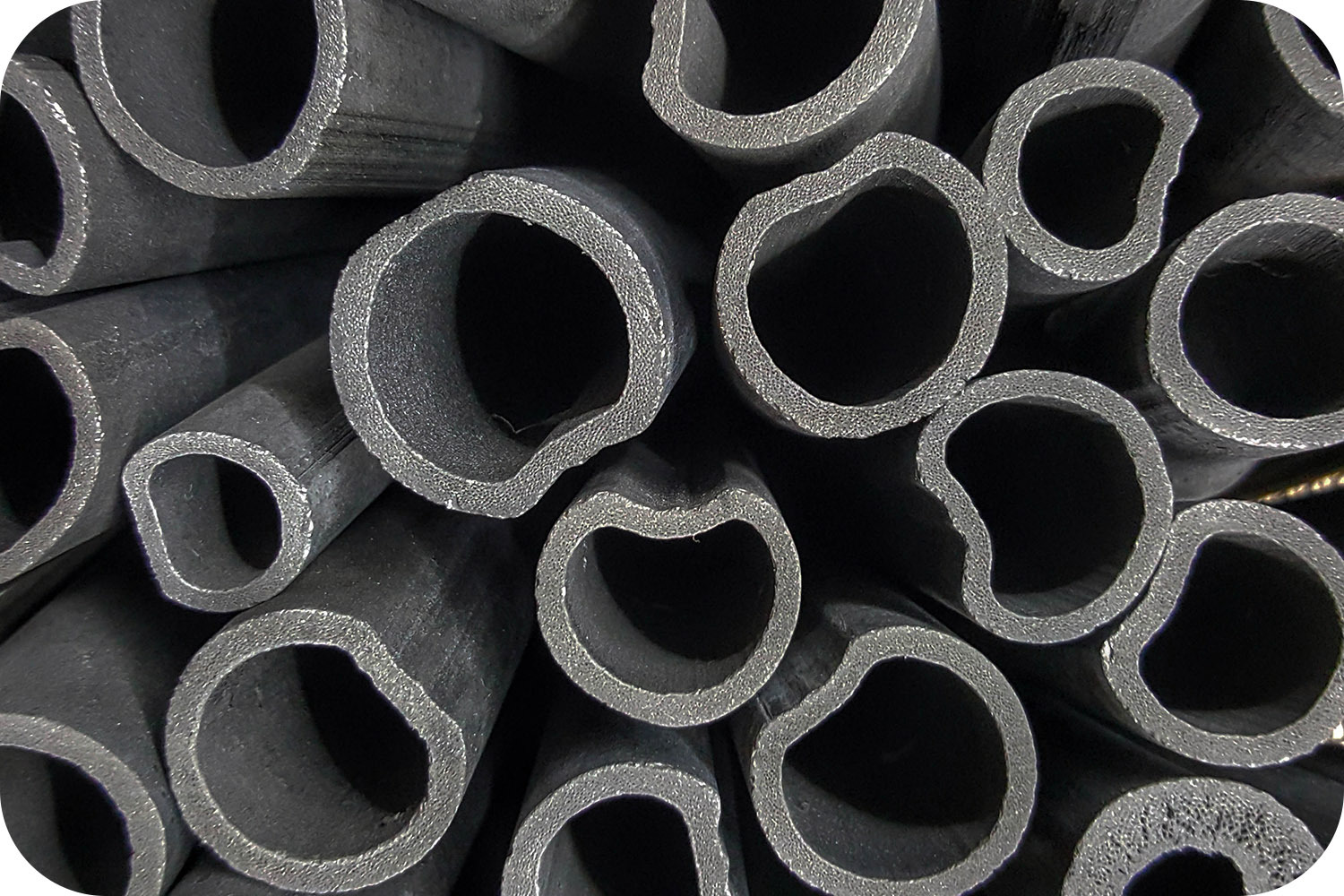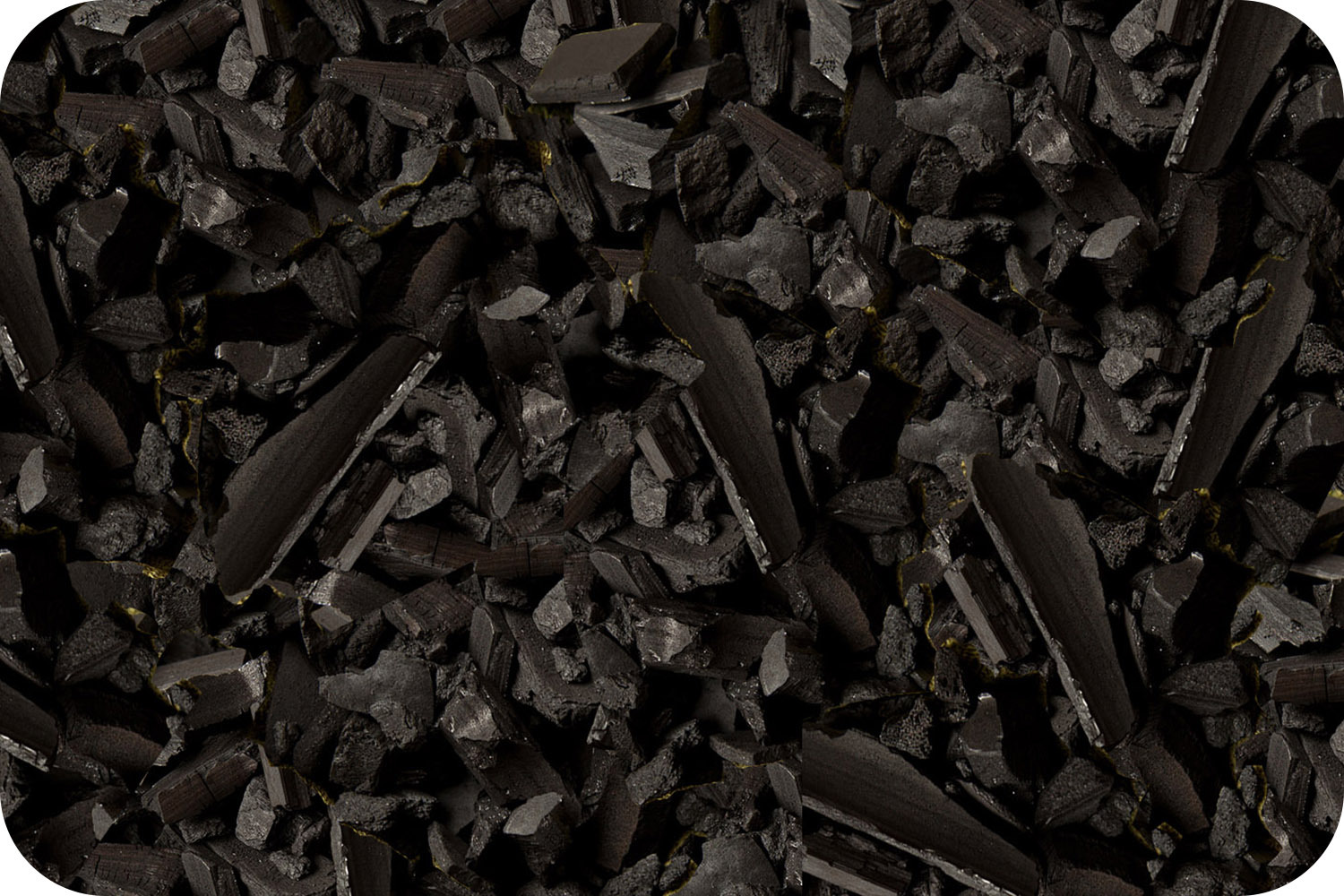Our signature Air Purifying Bag begins with a single ingredient: Moso Bamboo Charcoal, sourced exclusively from the lush mountains of Fujian Province, China- the native habitat where this remarkable species thrives. Moso bamboo (pronounced MOH-soh) is a towering variety of timber bamboo, growing up to 55 feet tall with wide, dense culms. This natural density is what makes it ideal for creating an exceptionally effective form of activated charcoal- one capable of absorbing odors, moisture, and pollutants from the air with unmatched efficiency.

The transformation from bamboo to charcoal is an art in itself. Once harvested, the bamboo is carefully air-dried, then slowly baked in a kiln at 750°C through a process known as pyrolysis. This high-heat, oxygen-free environment removes all organic matter, leaving behind a highly porous, ultra-pure charcoal prized for its ability to attract and trap airborne particles at the molecular level.
Importantly, Moso bamboo regenerates naturally, reaching full maturity in just five years without the need for replanting. It's a resource that’s not only powerful, but renewable and responsible.
The Science of Absorption, Perfected by Nature
What sets Moso Natural apart is not just the quality of our charcoal- but what it does on a molecular level.

Each granule of Moso bamboo charcoal contains millions of microscopic pores, creating an immense internal surface area. This porous network acts as a natural sponge, drawing in and trapping airborne moisture, odors, and impurities.
But the real magic lies in the charcoal’s natural ionic charge. When processed correctly at high temperatures, bamboo charcoal develops a negative ionic charge. This allows it to function much like a magnet- attracting positively charged particles such as odor molecules, allergens, and certain volatile compounds. Once captured, these particles are neutralized and truly eliminated.
Experience the Moso Difference
With premium Moso bamboo charcoal and a process perfected over a decade, our bags quietly eliminate odors and excess moisture without chemicals, perfumes, or gimmicks.

Other charcoal may look similar, but it lacks the precise conditions required for true air purification. When not produced in a controlled pyrolysis environment they are less porous, less pure, and ultimately less effective.
Our Standards
- Careful, high-temperature pyrolysis to ensure maximum surface area
- Ionic charge capable of actively attracting particles from the air
- Extended lifespan of up to two years
- Free from fragrance or chemical additives

